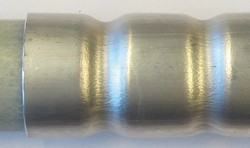Automotive joining that beats the competition
The automotive industry has gradually shifted emphasis from metal components to composites and hybrids that render tremendous savings in fuel consumption and emissions, thanks to the weight reductions achieved. However, metals still offer advantages in certain applications, making electromagnetic pulse joining technology quite attractive. EU-funded scientists working on the METALMORPHOSIS(opens in new window) (Optimization of joining processes for new automotive metal-composite hybrid parts) project adapted the electromagnetic pulse technology to take advantage of newly developed composites with the ability to be joined to metal. Requiring no heat and minimising scrap, this cold welding process uses a magnetic field to rapidly collapse one component onto another, forming a super-tight bond. A range of newly developed hybrid products showcased the reliability and cost effectiveness of this promising joining process. Researchers successfully demonstrated this innovative technology through the development of a hybrid shock absorber, a brake pedal and a bumper. The result was a new range of advanced metal-composite hybrid products with better performance than those produced by conventional methods. In the case of the hybrid brake pedal, the combination of dissimilar materials through electromagnetic pulse technology significantly smoothens sharp edges, thereby reducing the risk of serious lower limb injuries in a frontal collision. Researchers performed over 800 experiments over the project duration. In each experiment, several composite parts from different materials with different fibres were produced and characterised. Active thermography, a non-destructive testing (NDT) technique for composites based on disturbances in heat flow related to the presence of defects, was utilised and the use of ultrasonic inspection enabled the detection of subsurface defects. The parts were then joined to metals using electromagnetic pulse technology and the resulting hybrid metal-composite parts were subjected to both NDT and destructive testing. The experiments provided insight into optimal geometries, joint designs and process parameters for hybrid metal-composite parts. The project website serves as a showcase and portal for all project activities, results and news. Proof that electromagnetic pulse technology can improve the quality and productivity of hybrid automotive parts while reducing cost and environmental impact will fuel the EU automotive sector, which faces stiff competition from the Asian market.







